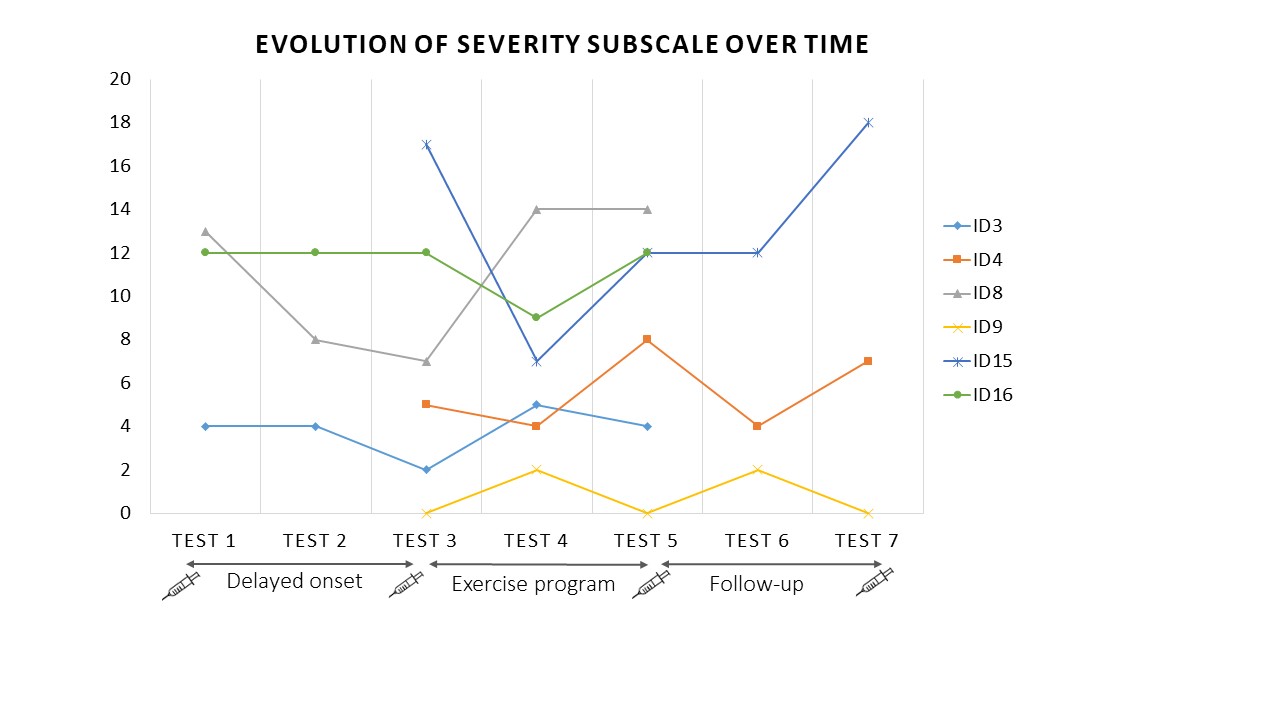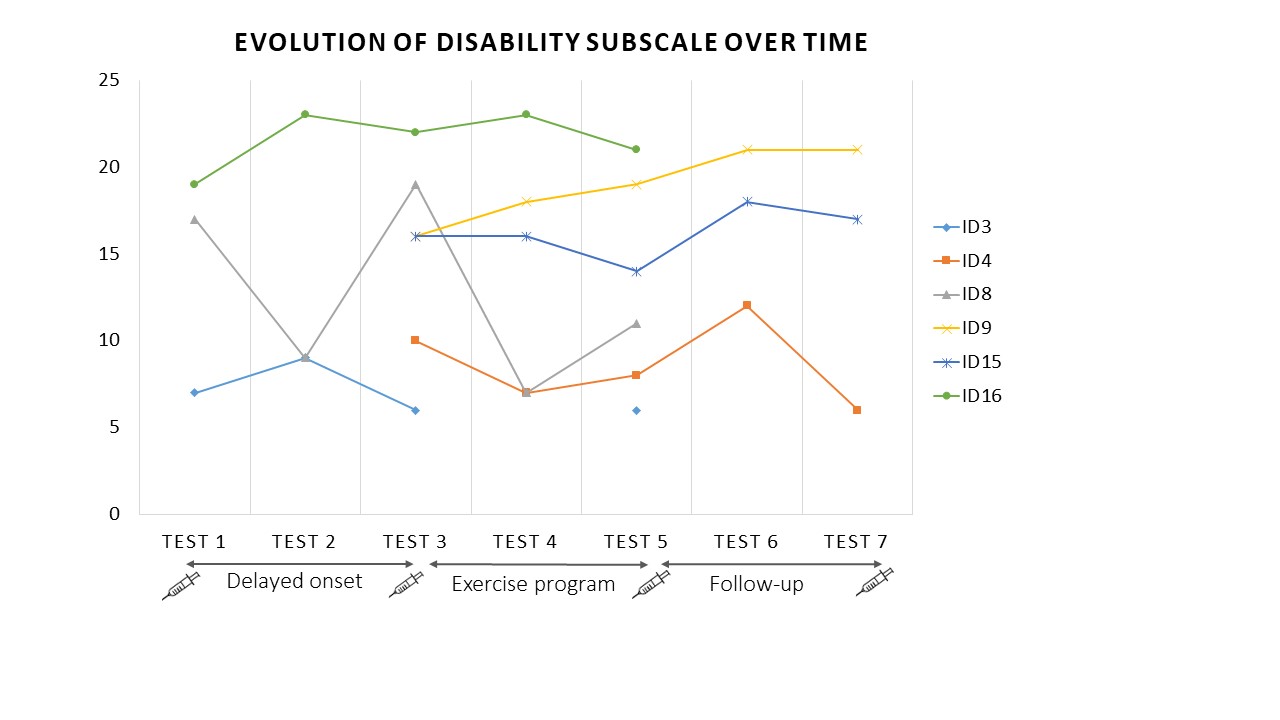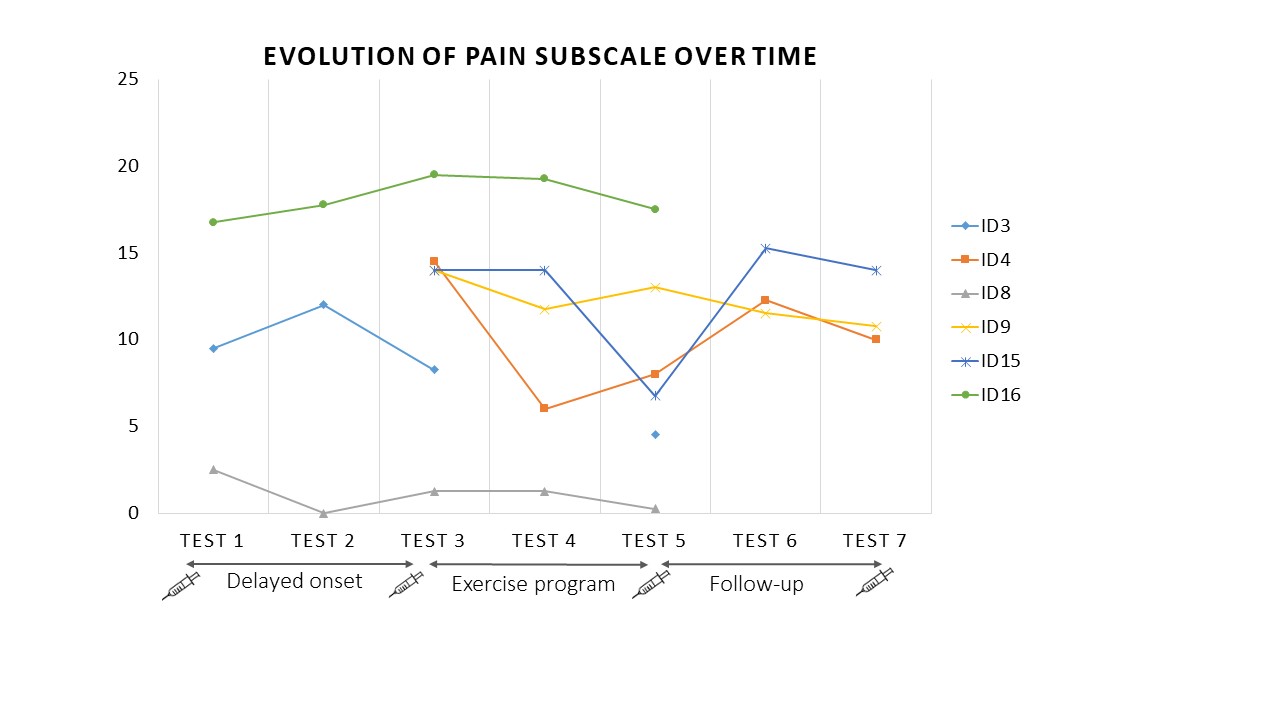Objective: To evaluate the effect of a home-based exercise program focusing on sensorimotor control additional to standard care in patients with idiopathic cervical dystonia (CD).
Background: Standard care in CD are botulinum toxin (BoNT) injections. Next to the injections physical therapy can result in additional reduction of the symptoms (1,2). Previous research indicates impaired sensorimotor control in CD (3), which does not normalize after BoNT treatment (4). Since optimal sensorimotor control improves head posture, the intervention is focused on improving sensorimotor control.
Method: Adult patients with idiopathic CD were recruited in a tertiary center for Movement Disorders. Patients were randomized into an immediate exercise group and a delayed onset group (start exercises 12 weeks after baseline). The intervention of 12 weeks consisted of a daily home-based cervical sensorimotor control exercises, with a follow up of 3 months. Patients were contacted every 2 weeks by telephone to enhance motivation and to add progression to the exercises. Every 6 weeks, video footage was made for blinded assessment of the severity subscale of the Toronto Western Spasmodic Rating Scale (TWSTRS).
Differences in pre- and post- assessments as well as median differences in change over time between the BoNT intervention and the BONT+exercise period will be calculated with a Wilcoxon signed-rank test.
Results: Over a recruitment period of 8 months, a total of 16 patients (14 females, 2 males) enrolled in the study of which 10 dropped out, because of the COVID pandemic (n=5), medical emergency (n=1), personal reason (n=1) and no specific reason (n=3). Mean age was 60.2 years (±11.3), mean duration of CD was 12.7 years (±7.1) and mean total score on the TWSTRS at baseline was 34.5 (±10.7). Since the large drop-out because of COVID-19, only observational data of the 3 subscales of the TWSTRS are presented in figure 1 – 2 – 3.
Conclusion: A larger sample size is needed to evaluate the effect of the exercise program. The exercises were easy to comprehend and execute at home especially with a telephone contact every 2 weeks. The advantage of a home-based exercise program is that any CD patient, no matter the geographical distance to specialized care givers can follow the program.
References: 1. De Pauw J, Van der Velden K, Meirte J, Van Daele U, Truijen S, Cras P, et al. The effectiveness of physiotherapy for cervical dystonia: a systematic literature review. J Neurol. 2014;261(10):1857–65. 2. Prudente CN, Zetterberg L, Bring A, Bradnam L, Kimberley TJ. Systematic Review of Rehabilitation in Focal Dystonias: Classification and Recommendations. Mov Disord Clin Pract. 2018;0:1–9. 3. Desrochers P, Brunfeldt A, Sidiropoulos C, Kagerer F. Sensorimotor control in dystonia. Brain Sci. 2019;9(4):1–18. 4. De Pauw J, Cras P, Truijen S, Mercelis R, Michiels S, Saeys W, et al. The effect of a single botulinum toxin treatment on somatosensory processing in idiopathic isolated cervical dystonia: an observational study. J Neurol. 2018;265(11):2672–83.
To cite this abstract in AMA style:
J. de Pauw, D. Crosiers, S. Girma, Y. de Borger, L. Gaspard, D. Smagghe, W. de Hertogh. THE EFFECT OF A HOME BASED SENSORIMOTOR CONTROL EXERCISE PROGRAM FOR CERVICAL DYSTONIA PATIENTS UNDER TREATMENT WITH BOTULINUM TOXIN INJECTIONS: OBSERVATIONAL STUDY [abstract]. Mov Disord. 2021; 36 (suppl 1). https://www.mdsabstracts.org/abstract/the-effect-of-a-home-based-sensorimotor-control-exercise-program-for-cervical-dystonia-patients-under-treatment-with-botulinum-toxin-injections-observational-study/. Accessed December 25, 2025.« Back to MDS Virtual Congress 2021
MDS Abstracts - https://www.mdsabstracts.org/abstract/the-effect-of-a-home-based-sensorimotor-control-exercise-program-for-cervical-dystonia-patients-under-treatment-with-botulinum-toxin-injections-observational-study/



